If you’ve been hearing about Search Engine Marketing (SEM) but feel like it’s shrouded in mystery, you’re not alone. Many small business owners struggle to understand what it is, how it works, and how to use it effectively. Worry not; SEM isn’t as complicated as it sounds, especially when you focus on the basics.
This guide will break SEM down into simple terms. You’ll learn what it is, how it can help your business, and steps you can take to get started, even if you don’t have a technical background.
What Is SEM?
SEM, or Search Engine Marketing, is a way to get your business in front of people when they search for specific products or services online. Unlike SEO (Search Engine Optimization), which focuses on free (organic) traffic, SEM is about paid efforts, like running ads on search engines such as Google or Bing.
Here’s a real-world example. Imagine someone running a cake shop in Chicago. When people search for “custom birthday cakes in Chicago,” SEM lets the cake shop display its ad at the top of the search results. This visibility can bring more people to the website and, ultimately, more people into the shop.
Why Is SEM Important for Small Businesses?
Small businesses often face stiff competition. With SEM, you can promote your services to the right people at the right time. If someone is actively searching for what you offer, there’s a good chance they are ready to take action. This makes SEM a targeted and effective way to drive sales.
Consider this. A local plumbing business decides to run a small, paid campaign targeting keywords like “emergency plumber near me.” They set their ad campaign to show up during typical peak times for plumbing issues, such as mornings or evenings. Because they’re reaching people at the exact moment when help is needed, their SEM campaign could deliver quick, measurable results.
How Does SEM Work?
At its core, SEM involves creating ads that appear when people search for specific keywords. It’s kind of like auctioning for prime real estate on search engine results pages. You bid on keywords related to your business, and if your bid is among the highest, your ad gets displayed.
Here’s a simple breakdown of what SEM campaigns involve:
- Choosing Keywords
Keywords are the backbone of SEM. These are the words or phrases people search for on the internet. For instance, if you run an online pet accessories shop, you might choose keywords like “affordable dog collars” or “best cat toys.”
- Setting a Budget
You control how much you want to spend. Ads work on a pay-per-click (PPC) model, so you only pay when someone clicks on your ad.
- Creating Engaging Ads
Writing an effective ad is crucial. Good ads include compelling headlines, clear benefits, and a call to action, like “Shop Now” or “Contact Us Today.”
- Targeting Specific Audiences
You can decide who sees your ads based on location, age, or even specific interests. For example, a yoga studio in Atlanta might target women aged 25-40 who live within a 10-mile radius of their location.
- Tracking and Adjusting
SEM platforms like Google Ads provide detailed reports. You can see which keywords or ads perform best, allowing you to tweak your campaigns to maximize results.
Tips to Succeed with SEM
If you’re new to SEM, it’s easy to feel overwhelmed. These practical tips can help you handle it like a pro.
Start Small with Your Budget
You don’t need a massive budget to see results. Begin with a modest daily spend, perhaps $5 or $10 per day. This gives you room to experiment without spending too much upfront.
Pick the Right Keywords
Not all keywords are created equal. Focus on terms that balance being specific and relevant. For example, instead of targeting broad terms like “shoes,” try something more specific like “running shoes for men.” Tools like Google Keyword Planner can help you find the right keywords for your business.
Use Local Targeting
If you’re a local business, geo-targeting can boost your success. This means your ads will only appear to people searching in your local area. A florist based in Denver could target ads to people within a 15-mile radius.
Write Ads That Speak to Your Audience
Generic ads often get ignored. Think about what makes your product or service unique and highlight that in your ad. A bakery that specializes in gluten-free treats might include wording like “Indulge Without Worry—Try Our Guilt-Free Bakes.”
Revisit and Refine Your Campaigns
Even the most successful SEM campaigns need fine-tuning. If one keyword isn’t delivering results, try shifting your focus to others. Regular adjustments can make a big difference in your return on investment.
Common Mistakes to Avoid
New to SEM? Watch out for these pitfalls:
- Ignoring the Landing Page: Your ad is only as good as the page it sends people to. Ensure your landing page matches the message of your ad and provides a clear way for visitors to take action.
- Targeting Too Broadly: Trying to target everyone rarely works. Narrow down your audience to people who are most likely to buy.
- Spending Without Monitoring: Keep an eye on your budget and performance metrics. Small changes can prevent your campaign from draining funds without generating results.
Takeaway
SEM doesn’t require technical expertise—it requires strategy and attention to detail. By starting small, focusing on the right audience, and continuously refining your campaigns, you can make SEM a powerful marketing tool for your business.
If you’re interested in exploring SEM but feel unsure about where to start, MoDuet offers hands-on guidance tailored to small business owners. Reach out today and take the first step toward growing your business with the help of SEM. You’ve got this!
We Want To Talk To You About Your Marketing Goals.
Let’s Supercharge Your Online Growth!












